10 Best Brushes for Huskies: Our 2024 Husky Brush Guide
Quick Guide
Whether it is their mischievous, lighthearted personality or their striking beauty that draws you to the Husky breed, you’re no doubt aware that Huskies are unlike any other dog.
These natural pack animals are simultaneously loyal and social, and their thick, double-layer coats are easier to care for than some might imagine. Huskies are known as a natural breed, meaning that their coats are shockingly good at self-cleaning and they rarely have a “dog odor.”
This self-cleaning coat saves Husky owners from having to frequently bathe their furry friends, but it does not eliminate the need for regular brushing. Much of a Husky’s coat is shed twice a year, and if you haven’t kept up with regular brushing sessions, all of that fur will wind up taking over your home.
If you know you need to brush your Husky regularly but you’re having a hard time knowing which brush is the right pick, this guide is for you. Not only will we list our top Husky brush picks, but we will also talk about different types of brushes and Husky coats. Keep reading for all the information you could need on the subject!
What is the Best Brush for a Husky?
- Pat Your Pet Two-Sided Undercoat Rake
- FURminator deShedding Edge Dog Brush
- Andis Deshedding Dog Tool
- FURminator Dog Grooming Rake
- Andis Premium Large Firm Pet Slicker Brush
- Safari Shedding Comb for Long-haired Dogs
- Hartz Groomer’s Best Combo Dog Brush
- Andis Premium Large Pin Pet Brush
- HandsOn All-In-One Bathing and Grooming Gloves
- Pet Republique Self-Cleaning Slicker Brush
Different Types of Husky Brushes
Huskies have a very particular coat that requires some very particular maintenance. Here we’ve listed some of the brush types that you will see used for Huskies most frequently, and the functions that they serve.
- Undercoat rake — This is a tool every Husky owner should have. It is essentially a heavy duty wide tooth comb. There is usually one layer of very strong teeth attached to a handle; it looks quite a lot like a small rake and it is designed specifically to target the softer hair of the undercoat (the usual culprit for shedding disasters).
- Shedding brush — A shedding brush is similar to an undercoat rake in that it serves to minimize the amount of Husky hair that winds up in your home, but a shedding brush focuses on the entire coat, and is usually equipped with shorter, finer teeth.
- Slicker brush — These brushes are defined by the many fine, wire bristles they employ. This brush is especially useful for cleaning a coat of dirt and debris that may have gotten stuck in there. For dogs with especially thick, fluffy coats like Huskies, a slicker brush can be a life saver after lots of outside play time.
- Pin brush — Closely resembling a human hair brush, pin brushes are great for smoothing out small tangles and leaving your Husky with a nice, uniform coat. They often come with safety tips on the pins, so this brush is quite comfortable for your dog.
- Comb — Combs are great for the coarser top layer of a Husky coat. They work well for addressing mats and tangles, which all long haired dogs are particularly prone to. They will also do a good job of collecting any loose fur which may have been left behind by an undercoat rake.
Different Types of Husky Coats
There is not much difference in Husky coat texture or grooming needs between the different coat types, but Huskies are unusual in that the breed standard allows for a wide variation in coloring and marking. The main color groups that you will see for a Husky are listed below.
- Grey — In Huskies, grey can range from slate to silver, and may be present on its own or in combination with white.
- Agouti — This coat type closely resembles a wolf, no doubt inherited from Huskies’ Siberian Wolf ancestors, and is one of the less common coat types.
- Black and White — Just like it sounds, this common coat type consists of black markings on an otherwise white coat.
- Pure White — An all-white coat comes from a recessive gene in Huskies, which can lead to other health issues (specifically related to their vision) but none that directly affect grooming.
- Copper — Like in the grey coat type, copper is an umbrella category that encompasses colors from pale red to auburn.
- Sable — One of the less common coat types, sable Huskies look quite similar to German Shepherds, though a weather eye can easily pick out differences.
Our Top Picks for Husky Brushes
Now that we’ve had a chance to discuss Husky coats and the types of brushes most commonly used for this talkative breed, let’s dive into our favorite Husky brushes!
| Our 2024 Picks: Best Husky Brushes, Combs and Rakes | |||
Pat Your Pet Two-Sided Undercoat Rake
|
CHECK PRICE | ||
FURminator DeShedding Edge Dog Brush
|
CHECK PRICE | ||
Andis Deshedding Dog Tool
|
CHECK PRICE | ||
FURminator Dog Grooming Rake
|
CHECK PRICE | ||
Andis Premium Large Firm Pet Slicker Brush
|
CHECK PRICE | ||
Safari Shedding Comb For Long-Haired Dogs
|
CHECK PRICE | ||
Hartz Groomer’s Best Combo Dog Brush
|
CHECK PRICE | ||
Andis Premium Large Pin Pet Brush
|
CHECK PRICE | ||
HandsOn All-In-One Bathing And Grooming Gloves
|
CHECK PRICE | ||
Pet Republique Self-Cleaning Slicker Brush
|
CHECK PRICE | ||
Pat Your Pet Two-Sided Undercoat Rake
Key benefits:
- Double sided for trimming as well as raking
- Rounded teeth prevent scratching or discomfort
- Specifically made for dogs with longer thick coats
- Easily reaches the undercoat
Overall Best Brush for a Husky –The importance of a good undercoat rake cannot be overstated for a Husky, and this one does double duty. Not only does this brush thin out the hard-to-reach undercoat, but it also helps to work out tangles and mats on the surface of your pup’s fur.
Pros:
- Very effectively cleans out undercoat
- Dual sides help to eliminate mats
- Fur can easily be removed from teeth
Cons:
- Will not cut through larger mats
- Can be painful when pulling at knots
FURminator deShedding Edge Dog Brush
Key benefits:
- Tightly packed row of metal teeth
- Can reduce shedding up to 90%
- Targets undercoat
- Skin guard prevents edges from digging in
Best Shedding Brush for Huskies —This shedding brush was designed by a groomer, so you know it’s going to be effective. With regular use, it can actually reduce shedding by 90%. What could be a greater incentive to stick to a grooming regimen than that? This brush will work to thin out your Husky’s fluffy undercoat, thereby cutting down on shedding.
Pros:
- High rate of shedding reduction
- Equipped with skin guard to protect your Husky
- Will trap all loose hair for easy removal
Cons:
- Push button to release hair may not release
- Teeth may be too short for especially thick coats
Andis Deshedding Dog Tool
Key benefits:
- Stainless steel, hook shaped teeth to grab fur
- Comfortable even for dogs with a thick coat
- Gets rid of almost all excess undercoat
- Compact and easy to use
Best Deshedding Tool for Huskies —If you don’t take the time to handle all that Husky fur in advance, you’ll live to regret it when one of their shedding seasons arrives. This deshedding tool snags loose fur in the undercoat and pulls it out so you can eliminate it before it ever has a chance to shed.
Pros:
- Effective at pulling out loose undercoat
- Feels more like a massage than a grooming session
- Smaller than a regular brush or rake
Cons:
- May feel like it’s ripping at especially dense undercoats
- Takes some work on your part to pull through the coat
FURminator Dog Grooming Rake
Key benefits:
- Rounded teeth made of stainless steel
- Spaced out enough that hair can snag in the teeth
- Longer teeth than many undercoat rakes
- Will not cause your pup any pain
Best Undercoat Rake for Huskies —Another great undercoat rake, this one will work especially well for Huskies with extra dense coats. The long teeth will be able to reach down into the undercoat to pull out any dead fur that would otherwise be shed around your home.
Pros:
- Long, spaced out teeth to grab and hold on to hair
- Rounded pins mean no pain for your Husky
- Very affordable
Cons:
- Handle can detach from head
- Easy to press too hard into your dog’s skin
Andis Premium Large Firm Pet Slicker Brush
Key benefits:
- Tightly packed fine, wire bristles on a rectangular head
- Effective for removing dirt, debris, tangles, and mats
- Targets topcoat and undercoat
- Costs less than $9
Best Slicker Brush for Huskies —Slicker brushes are great for maintaining the fluffy texture of your Husky’s coat, helping to detangle any pesky knots and to remove any dirt or debris that may be dulling their fur’s appearance. The slicker brush isn’t likely to pick up much dirt, though, since Husky coats are self-cleaning.
Pros:
- Broad head for a more thorough brushing
- Effectively traps loose dog fur in the bristles
- Keeps Husky coats light and fluffy
Cons:
- May not reach the undercoat well
- Bristles are a little tough
Safari Shedding Comb for Long-haired Dogs
Key benefits:
- Made with metal teeth and a wooden handle so it is durable
- Specifically meant for long hair and thick coats
- Teeth vary in length to hit undercoat and topcoat
- Traps hairs between the teeth
Best Comb for Huskies — Huskies are exactly the type of dog a comb is effective for. Their long, thick fur has a tendency to tangle, and this wide-toothed comb painlessly works out those little knots while also collecting loose fur before it is shed.
Pros:
- Varied teeth length for maximum effectiveness
- Sturdy build with high quality materials
- Will prevent tangles from building up in Husky fur
Cons:
- May be too small for very large Huskies
- Will not be as effective at pulling out all of the extra undercoat as some other brushes
Hartz Groomer’s Best Combo Dog Brush
Key benefits:
- Dual sided with pins and bristles
- Extra gentle on thick coats
- Pins are equipped with safety tips
- Both sides are comfortable for your Husky
Best Pin Brush for Huskies —This pin brush maximizes function and minimizes space consumption by providing a dual-sided head: one with pins, and the other with tightly packed bristles. A bristle brush isn’t especially useful for a Husky (their coat is not meant to shine in the way many other dogs’ are). It’s not a bad idea to have a bristle brush on hand, though, especially when it is attached to your pin brush, as it can help clear out dirt.
Pros:
- Gently detangles and smooths fur
- Helps gather any hair that was loosened by other brushes
- Painless, even for very thick-coated Huskies
Cons:
- Pins pull out somewhat easily
- Will not thin out undercoat on its own
3 More Top Rated Husky Brushes
Those are our top picks for Husky brushes, but since when is having a options a bad thing? Here are 3 more top rated brushes for Huskies that you can peruse!
Andis Premium Large Pin Pet Brush
Key benefits:
- Effective for removing loose fur, as well as tangles and dirt
- Good finishing touch for a grooming routine
- Dogs love this brush
- Gentle on tender areas
Another excellent pin brush, this one comes without any bristles on the back. It is great for brushing out light tangles from the coarser areas of a Husky coat, like the backs of the legs and tail; it will also gather any loose fur left behind by earlier brushes.
Pros:
- Comfortably smooths out knots
- Costs less than $9
- Perfectly rounds out any grooming routine
Cons:
- Tips can fall off the pins
- Works well on silkier fur, which Huskies do not have
HandsOn All-In-One Bathing and Grooming Gloves
Key benefits:
- Fitted cloth gloves with rubber nodule palms to collect fur
- Gloves come in a wide range of sizes
- Rubber nodules range from small to large
- Allows your dog to feel pampered while being brushed
This grooming system features unparalleled convenience. The dotted palms of these gloves will collect your Husky’s fur (wet or dry) as you massage them. They are a great tool to use after pulling out the undercoat with a rake, as they will allow you to collect any loose fur.
Pros:
- Comfortable for both you and your Husky
- Ideal for longer, thick coats like that of a Husky
- Allows you to brush your dog while wet or dry
Cons:
- Not effective at reaching the undercoat
- Can be difficult to remove hair from the palms
Pet Republique Self-Cleaning Slicker Brush
Key benefits:
- Flexible bristles for gentle detangling
- Bristles are retractable to allow easy cleaning
- Can reach both layers of a Husky coat
- Effective at reducing shedding
Self-cleaning slicker brushes like this one are great for coarse-coated dogs like Huskies, as they prevent you from having to spend valuable time pulling hair out of the bristles. Since they are flexible, these bristles will gently detangle your Husky’s thick fur.
Pros:
- Self-cleaning mechanism
- Bristles are long enough to reach the undercoat
- Specifically designed for thick coated dogs
Cons:
- Small size means stopping frequently to empty the brush
- Bristles may hurt your dog if pressed into their skin
6 Tips for Brushing your Husky
Those are some of the best brushes on the market for your Husky, but what about the act of brushing itself? Here are 6 tips to make the process as easy as possible for both you and your pup!
- Brush with the coat — As you well know, Husky coats are quite dense. You may think that brushing against the grain will allow you to retrieve more fur, but it will only serve to cause your dog discomfort and leave you with a tangled mess to sort out. Brush the coat in the same direction it grows to keep your Husky happy and keep their coat uniform.
- Prioritize your brushes — Every experienced Husky owner is likely to have a number of different types of brushes. It’s great to have many tools available, but you won’t always have time to use them all. Establish an order to your brushing routine with the most important brushes first, so you’ve got the big stuff out of the way should you run short on time.
- Reward your Husky after brushing — Most dogs with especially dense and coarse coats aren’t huge fans of being brushed. For fun-loving Huskies, just the act of having to sit still long enough to receive a thorough brushing can be frustrating. Offering a reward after each brushing session will encourage your Husky to actually enjoy being groomed.
- Make them sit still — We know this is a tall order for Husky owners, as these dogs love to be on the move, but if you can get your Husky to stay still, the brushing process will go much quicker. Whether it is through stern instruction or incentivizing, you will be through with brushing much faster if you can get your Husky to stop bouncing around.
- Check for mats — Tangles can turn into mats more quickly than you might realize, so it is a good idea to check your Husky’s coarser areas for mats on a regular basis. Staying on top of mats will prevent you from having to spend extended periods of time brushing out especially bad ones.
- Use more than one tool — Husky fur is unlike that of almost any other dog (even their other sled dog cousins), and it requires a very specific kind of maintenance. One brush simply won’t accomplish a thorough Husky grooming, so you should consider having several on hand. Start with your undercoat rake or slicker to loosen up dead fur and detangle, then move on to combs and pin brushes later in the process to gather up those stray hairs.
FAQs Regarding Brushes for Huskies
- What type of brush is best for a Husky? If you could only use one brush on your Husky for the rest of your life, it should be an undercoat rake. This type of brush is the most effective at thinning out the dense Husky undercoat, which contributes most heavily to shedding. If the shedding doesn’t bother you so much, but tangles are a big concern, a slicker brush is another very useful option for Huskies.
- How can I cut down on my Husky shedding? Brush them regularly! There is no way to keep that fur attached to your Husky’s body forever, new growth will inevitably arrive. That is why it is so important that you continue to groom your Husky all year, and not just during their bi-annual shedding seasons. Consistent grooming will prevent dead hair from accumulating and eventually shedding; a few minutes of brushing a week will prevent constant cleaning later on.
- Do Huskies need to be brushed often? Yes—though not as often as some other breeds. While these dogs do not need frequent baths, you should try to brush your Husky once a week. Every brushing does not need to be a drawn-out process, but it is a good idea to perform a more thorough grooming at least once a month.
- Should I shave my Husky? Definitely not. Double coats are great at temperature regulation (even thick ones like your Husky’s), and shaving your Husky may actually make it more uncomfortable than doing nothing at all. As long as you’re doing the work of thinning out dead hair from the undercoat on a regular basis, your Husky will find ways to stay comfortable so long as the temperature isn’t unreasonably hot.
Conclusion
Every Husky owner can attest to the fact that this breed has a personality all its own. Their vocal attitude, striking appearance, and fierce loyalty charm their owners in a way only Huskies can. Doesn’t a dog as special as yours deserve extra special care?
Huskies’ unusual coats and lively demeanors can certainly present obstacles for grooming, but nothing that can’t be overcome with some effort and education. We hope this guide has helped you understand how exactly to provide your Husky with the best brushing experience possible; now don’t wait to shop the best brush (or brushes) for your special pup!


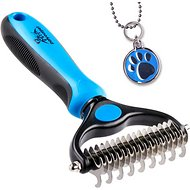
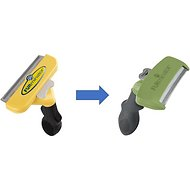
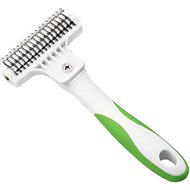
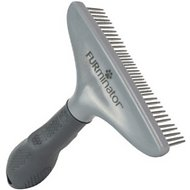
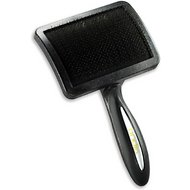
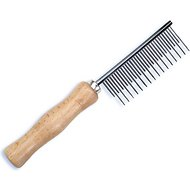
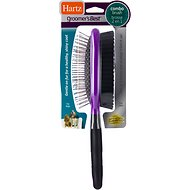
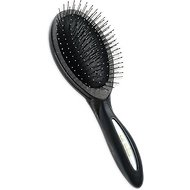
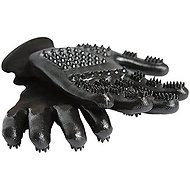
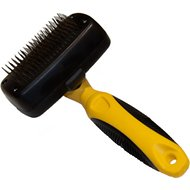
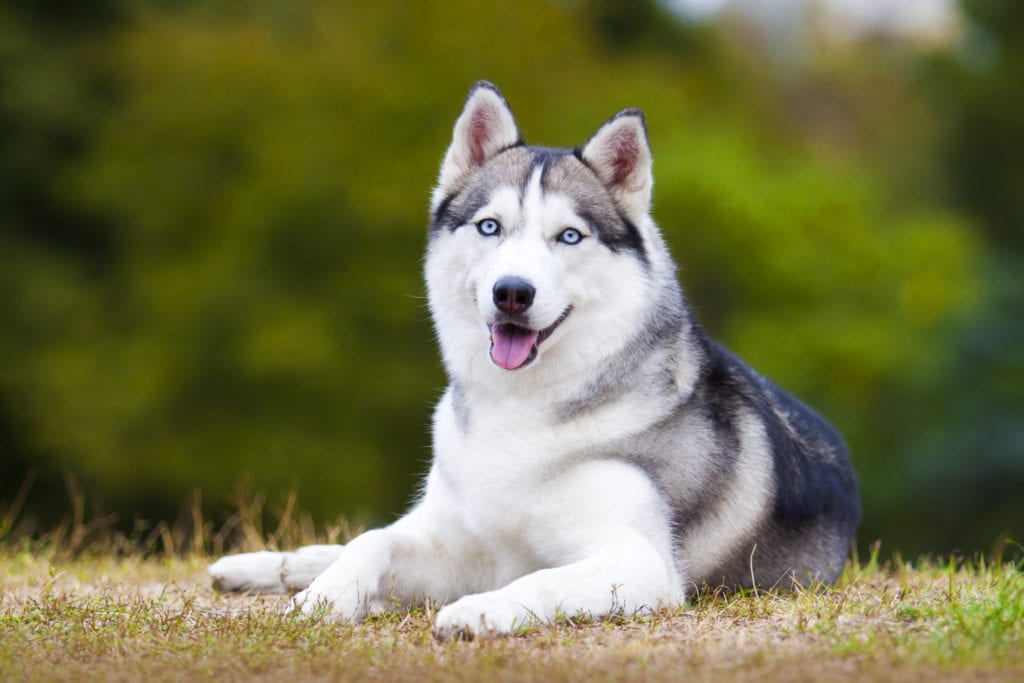





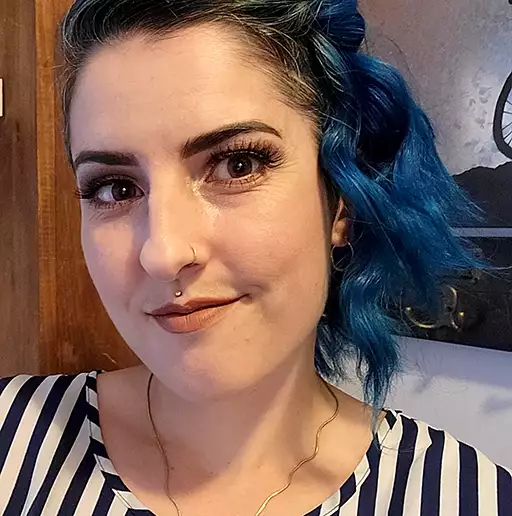

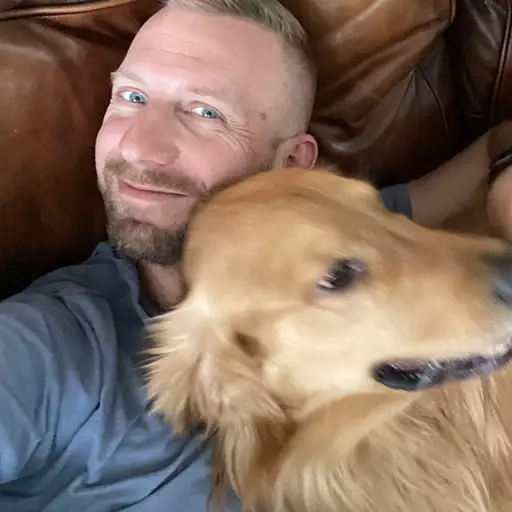
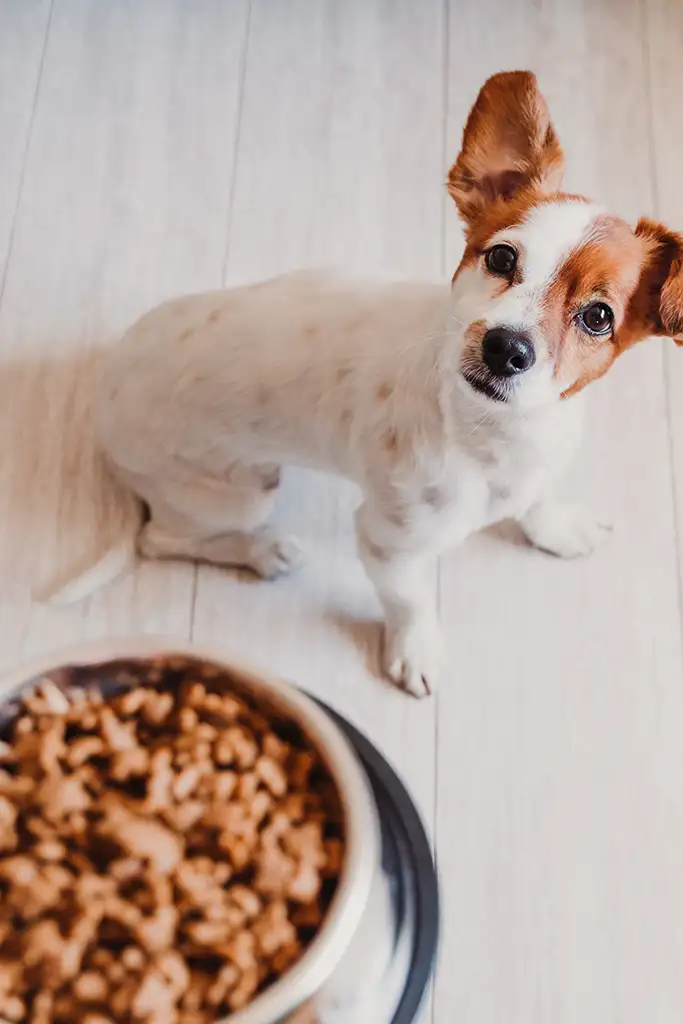
Used several of these tools and finally settled on the furminator for several years…until I was recommended an undercoat rake by paws pamper. Let me tell you, it is CRAZY how much fur it gets out. Definitely needs to be included on this list, highly recommend for huskies or any double-coated breed!